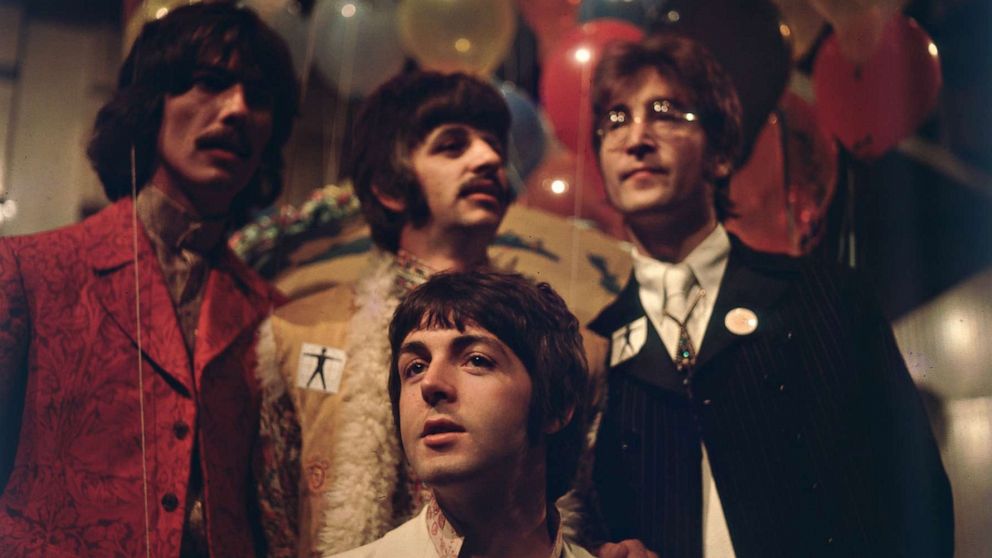Abbey Road Studios, where the Beatles recorded, turn 90
[ad_1]
LONDON – Abbey Road Studios, the legendary heart of The Beatles’ music catalog, celebrated its 90th anniversary this month.
A number of other famous artists – from Pink Floyd to Adele – have also used the recording studio. But it’s the Beatles and their chart-topping 1969 album – named after the street in London where the studio is located – that the venue is most closely associated with.
“I remember being pretty nervous most of the time in the recording studio, but also very excited – nervous excitement. It was fantastic to be in Abbey Road,†said Paul McCartney, according to the Autobiography of Beatles in 2000, “The Beatles Anthology.”
“We lived there,†he added. “I loved it so much that I even had a house around the corner. I never wanted to leave.”
To celebrate nine decades of recording music, Abbey Road Studios hosted a two-day festival this month dedicated to the next generation of music makers. The festival featured panels and other events covering a range of topics, from how to become a music producer or engineer, to the business of music publishing. While looking to the future, this milestone anniversary was also an opportunity for Beatles fans to remember the studio’s important place in musical history.
Abbey Road Studios, formerly EMI Recording Studios, opened on November 12, 1931. The Gramophone Company, one of the UK’s first record companies, had purchased a nine-bedroom house on Abbey Road in the north of London, in St. John’s Wood. neighborhood in 1929 and spent two years turning it into “the world’s first purpose-built recording studio,” according to the Abbey Road Studios website.
The Gramophone Company merged with the Columbia Graphophone Company in 1931, becoming Electric Musical Industries (EMI). The recording studio was renamed in the 1970s in honor of the Beatles’ album “Abbey Road”.
Over the years, Abbey Road Studios has been an integral part of many beloved film scores including “Indiana Jones: Raiders of the Lost Ark”, “The Lord of the Rings”, “Harry Potter”, “Star Wars” “,” Skyfall, “” Gravity “and” Black Panther “.
Lester Smith, the keeper of Abbey Road Studios’ impressive collection of microphones for the past 50 years, recalls working on the 2010 Oscar-winning film “The King’s Speech” with veteran sound engineer Peter Cobbin , who requested the microphone used by King George of Great Britain. VI.
“There were actually five microphones, and Peter asked me to try to get them to work,†Smith said in a statement earlier this month. “After being silent for 70 years, this was a very special occasion to try.”
Abbey Road Studios is also credited with important technological creations. Stereophonic, or stereo, sound was invented in the 1930s by Alan Blumlein, electronic engineer at EMI. Artificial Dual Track (ADT), a revolutionary technology that helps enhance vocals or instruments while mixing, was invented specifically for the Beatles in 1966 by Ken Townsend, sound engineer at EMI.
“There are composers who can hear if something was recorded at Abbey Road because it has such a distinct sound,” Isabel Garvey, general manager of Abbey Road Studios, told ABC News Wednesday.
Today, Abbey Road Studios not only makes musical magic, but is also a place of pilgrimage for generations of Beatles fans. Every day, people from all over the world come to cross the famous Abbey Road level crossing, as depicted on the iconic album cover art, and pay tribute to the band by writing on a graffiti wall in front of the studio building, which repaints itself. every few months to make room for new messages.
“The gravitational pull to Abbey Road is global,†Garvey said, “and it’s not just for The Beatles.â€
In 2010, amid reports that the building could be sold, Abbey Road Studios was added to England’s List of Listed Buildings on the advice of the English Heritage charity. The crosswalk also became the first of its kind to be classified in the same year. Garvey said that means the building and its recording studios, especially the famous Studio Two, are virtually unchanged since the Beatles recorded there.
Abbey Road Studios remains at the forefront of technological and musical developments with its innovation arm, Abbey Road Red. Launched in 2015 as Europe’s first music-focused technology incubator, the program supports the efforts of entrepreneurs, developers and researchers. From an automated mastering platform to BrainRap, an AI-powered device that generates lyrics while an artist freestyle or sing, Abbey Road Red harnesses the scope and fame of the studio to foster a new wave inventions that will change the world of music.
[ad_2]


Comments are closed.